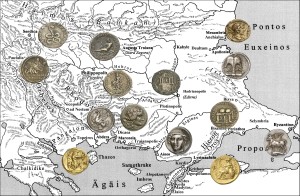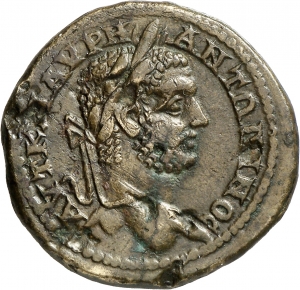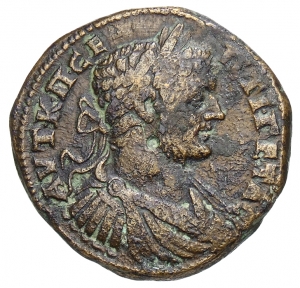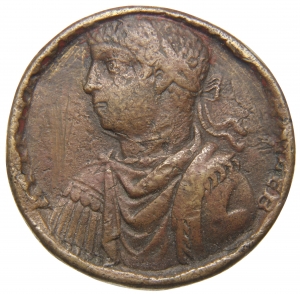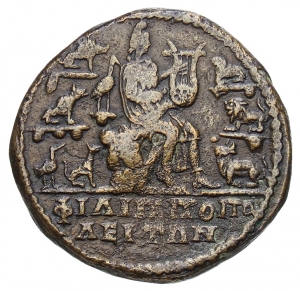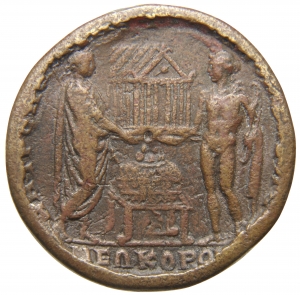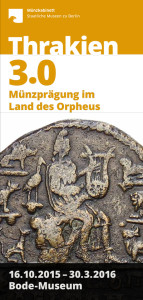Thrace 3.0: Coinage In the Land of Orpheus
Numismatic Collection in the Bode-Museum
The ancient region of Thrace, which today comprises Bulgaria, the European part of Turkey and northern Greece, is characterized by a varied landscape, an eventful history and a rich and diverse coinage.
The exhibition in the Bode-Museum displayed Thracian coins from the archaic to the Roman period that were minted by Greek colonies, indigenous tribes, local dynasties and Roman provincial administrators and that depict underlying identity constructions.
From Topoi’s perspective, the focus was primarily on two display cases on the coinages of the Thracian cities of Pautalia and Philippopolis. These coinages were examined in projects by Lili Grozdanova and Ulrike Peter of research project (B-4-2) Region and Memorie: Local history and local myths on Thracian provincial coins. Selected specimens of the coinages of these cities serve as examples of the transmission of historical knowledge, while other designs illustrate topographical characteristics and urban features. An important position is occupied by the Greco-Roman gods depicted on the coins; their local characteristics are an important clue to how urban identity manifests itself in these coinages. In addition, emphasis is also placed on manifestations of successful integration into the Roman Empire. Coins from both poleis demonstrate an interesting interplay between these manifestations and local identity features.
Coins are a particularly good medium for investigating the potential influence that social, economic and administrative changes can exert on local identity constructions. The exhibition demonstrated this clearly by drawing on coinages from 44 Thracian cities. It also emphasized the extent to which these coins reflect or even propagate not only a local, but also a shared, regional Thracian identity.
Date
October 16, 2015 to March 30, 2016
Exhibition opening: October 15, 2015
Place
Bode-Museum
Special Exhibition room of the Münzkabinett (Numismatic Collection)
Museumsinsel Berlin
Research Projects
→ (B-4-2) Region and Memorie: Local history and local myths on Thracian provincial coins
→ Corpus Nummorum Thracorum

